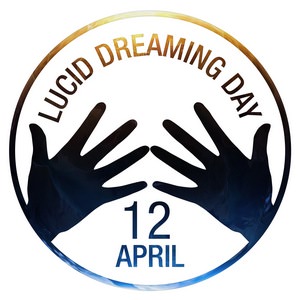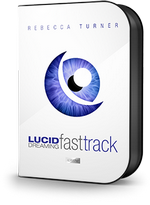Lucid Dreaming Day 2015

Lucid dreamers around the world are warming up to celebrate the annual Lucid Dreaming Day this April 12. There will be an opportunity to meet like-minded people, take part in dream challenges, win prizes and introduce the uninitiated to the wonders of dream exploration.
The event is a collaboration between a growing number of lucid dream experts and researchers which is hosted online - so turn up in your pajamas and join the celebrations!
Connect Now
- Lucid Dreaming Day's Facebook 2015 Event
- Lucid Dreaming Day on Twitter
Competitions

The organizers of Lucid Dreaming Day are giving away awesome prizes including a Kindle, FitBit sleep tracker, Dream Essentials sleep mask, $50 Amazon gift card, a signed script of the new lucid dreaming series Anamnesis, and plenty more.
To show our support, World of Lucid Dreaming is also giving away lifetime access to the Lucid Dreaming Fast Track in the Dream Selfie competition. Here's how you can win:
- Take a selfie in which you're performing a reality check.
- Using your best photo editing skills, superimpose yourself into a fantastical dream scene. Alternatively, find a real-world setting that looks super dreamy.
- Share your photo on your Facebook or Twitter page with the hash tags #LucidDreamingDay and #MyLucidDream. Also post it to the official Facebook event page here.
Besides being in to win some the official LDD prizes, I'll choose my favorite three entries based on creativity and originality by midnight on April 14th and issue the winners with their private access to my lucid dreaming course.
Anamnesis Launch
Also this Lucid Dreaming Day, look out for the launch of the sci-fi web show, Anamnesis, an original series based on lucid dreaming. Watch the trailer below and find out more here.
The Roots of Lucid Dreaming Day
Why do we celebrate Lucid Dreaming Day in April?
It actually falls on the historic date of April 12 when, in 1975, lucid dreaming was first scientifically proven by Dr Keith Hearne.
"If lucid dreaming were to be compared to space exploration, then the achievements of English psychologist Keith Hearne could be considered comparable in magnitude to those of NASA during the time of the first moon landing."
~ Daniel Love
For it was Hearne who first demonstrated a method by which we can communicate to the waking world during a lucid dream.
He exploited the nature of Rapid Eye Movements (REM) to have an experienced lucid dreamer called Alan Worsley perform a pre-defined set of eye movements during his lucid dream.
After a false start (in which Worsley performed the routine but the recording equipment had been shut down for the night), Hearne successfully recorded Worsley's smooth and deliberate eye movements on an electro-oculogram (EOG) at around 8am on the morning of April 12th, 1975:
"Suddenly, out of the jumbled senseless tos and fros of the two eye-movement recording channels, a regular set of large zigzags appeared on the chart. Instantly, I was alert and felt the greatest exhilaration on realising that I was observing the first ever deliberate signals sent from within a dream to the outside. The signals were coming from another world - the world of dreams - and they were as exciting as if they were emanating from some other solar system in space."
~ Dr Keith Hearne
Hearne's EOG experiment was formally recognized through publication in the journal for The Society for Psychical Research. Unfortunately, this fell short of the required reading material for most relevant experts and his work went widely unknown.
A few years later, in 1983, Dr Stephen LaBerge performed another ocular signaling experiment at Stanford University. He went on to forge a lifelong career in the field of lucid dream research and is a widely known expert on the subject, often credited for being the first to scientifically verify lucid dreaming.
The media fell in love with the romantic idea of lucid dreaming being a real phenomenon and today it frequently hits the headlines - curiously, in both science and paranormal media streams.
Clearly, both Hearne and LaBerge have played significant roles in this field and it's important that we recognize both of their contributions over the years. But on April 12th, we'll remember the Neil Armstrong of lucid dreaming: the humble shop worker, Alan Worsley, and his landmark eye movement signals to Dr Keith Hearne working through the night in his sleep research lab.
Why Awareness Means a Better Future for Lucid Dreaming
Increasingly, "lucid dreaming" is becoming a household term.
Musical albums, Hollywood movies and science fiction novels have all contributed to its presence in our popular culture in the last decade. We already have great momentum behind us.
To keep raising awareness of lucid dreaming as a regular nocturnal pastime means that more students of tomorrow will:
- Launch their own quest for lucid dreaming
- Enter the field of sleep and dream research
- Develop lucidity induction technologies
- Explore lucid dreams as a therapeutic tool
- Use dreams to create lucid music, art and literature
- Solve problems and invent technologies in their dreams
Not only will greater interest lead directly to new developments in our lucid dream technology (from induction devices, to dream playback machines, and even experiencing shared dreams one day)... it will also afford us huge opportunities to better ourselves as individuals and mankind as a whole.
I believe that if every human being were to start harnessing the power of lucid dreams then our culture, art, technology, medicine, science and beliefs would quickly evolve in a whole new direction. The human race would be enriched as a result, both individually and universally.
That certainly gives us something to strive for on Lucid Dreaming Day.
















